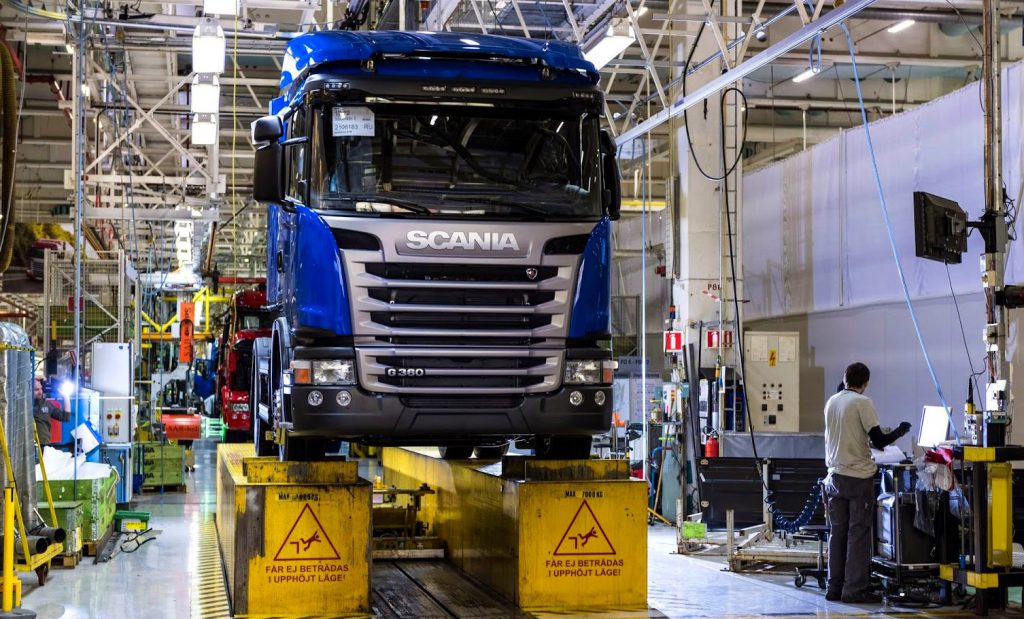Scania, a renowned manufacturer in the heavy vehicle industry, currently produces five distinct series of trucks, three series of bus chassis, and five complete buses. With a production capacity of around 90,000 vehicles annually, spread across ten production sites, Scania exemplifies efficiency and innovation in vehicle manufacturing.
The Largest Scania Factory: Zwolle, Netherlands
Located near Zwolle in the Netherlands, the largest Scania factory is a hub of activity, producing approximately 120 trucks daily. This facility employs around 2,000 individuals, who are supported by numerous robots to streamline the assembly process.
Modular Construction: The Backbone of Scania Trucks
A standout feature of Scania’s manufacturing process is its modular construction approach, which allows for various types of trucks to be assembled on a single chassis. The assembly begins with four operators attaching the cross members to the longitudinal members of the steel alloy and aluminum bracket chassis. This meticulously timed process ensures minimum production time and maximum efficiency.
The assembly progresses with pre-assembled axles being added to the chassis, followed by the engine, which includes Scania’s in-house developed opticruise gearbox for improved performance and fuel efficiency. The vehicle body is then meticulously inspected before undergoing the “wedding process” where the cabin is attached to the chassis. Structural and electrical connections follow, bringing the truck to near completion.
Quality Control and Final Assembly
In the final stages, components such as the fuel tank, with a capacity of around 300 liters, and the tires are added. The Scania R410 model undergoes a rigorous quality control process, ensuring proper tire pressure and functional verification of electronic components. Workers move along the production line, adding remaining components with precision.
Scania’s Global Assembly Sites
Scania’s production facilities span across several countries, each specializing in different aspects of the manufacturing process:
- Scania Production Meppel: Specializes in painting plastic parts, cabs, and chassis.
- Scania Production Angers: One of four truck assembly sites worldwide, assembling over 114 trucks daily, primarily for Western and Southern Europe.
Detailed Assembly Workshops
At various workshops, the assembly process includes installing wires, hydraulic hoses, cables, and valves onto the frame. The brake system, fully pneumatic with an anti-lock system, can be equipped with additional features for enhanced efficiency and safety. As the frame takes shape, axles and wheel hubs are installed, tailored to customer specifications, including wheel formulas from 4×2 to 10×6 for varying road conditions.
Engine and Component Installation
Engines, delivered fully assembled, are mounted onto the frame along with other critical components such as the radiator, battery compartment, transmission rods, and exhaust pipes. These engines meet Euro 6 environmental standards, highlighting Scania’s commitment to sustainability.
Cab Manufacturing and Painting
Scania’s cab factory in Oskarshamn, Sweden, produces truck cabs for the entire European output. Each day, 150 tonnes of galvanized plate are processed into 200 different articles, forming 310 metal plate items per cab.
The painting process is almost entirely automated, utilizing 22 robots to ensure uniform coating. After painting, parts undergo rigorous inspection and minor deviations are corrected promptly.

Final Assembly and Quality Assurance
The final assembly involves installing the cab onto the truck, with workers assisted by advanced hydraulic cranes and wrenches. Once assembled, the truck is filled with necessary technical fluids, and the engine is started for the first time. The truck undergoes extensive testing, including wheel camber, headlight alignment, and tachograph adjustments. A pre-sales specialist conducts a test drive to ensure optimal performance.
Before delivery, a complete external inspection is performed, and any issues are rectified. Scania’s stringent quality control processes ensure that every truck meets the highest standards of quality and reliability, tailored to customer needs.